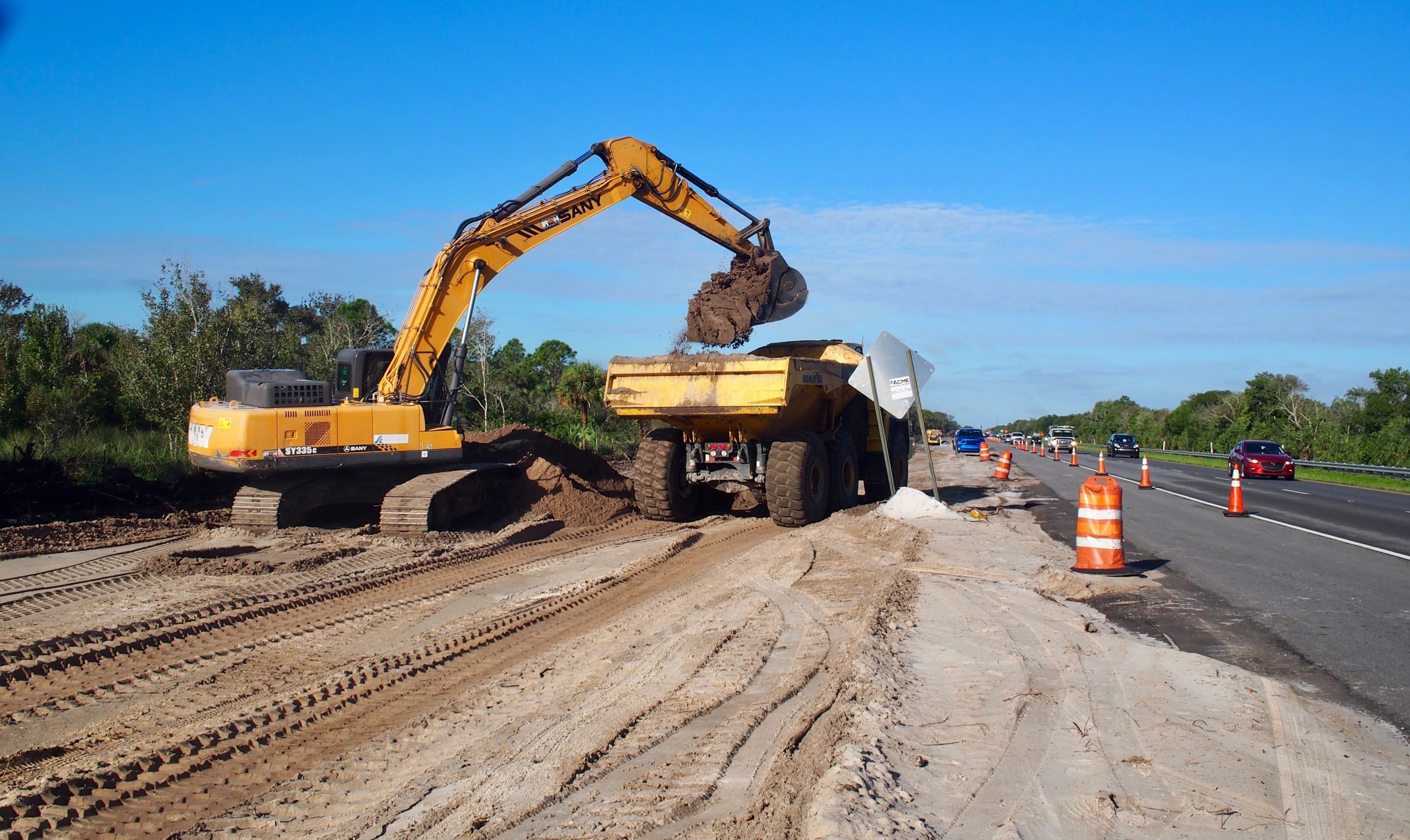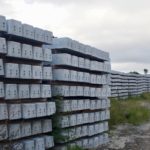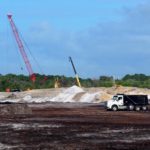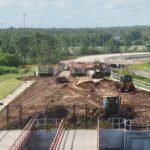
It’s getting real, this long discussed, debated, fought over, raved about, warned against, litigated, lobbied, opposed, permitted, creatively financed, doubted, and relentlessly pushed idea of a privately owned, higher-speed, passenger train service to connect Orlando and Miami.

Real, as in the rail corridor is being cleared and graded. Dirt is being moved. Supplies like railroad ties are being manufactured, hauled in, and stacked for use. And more substantial items like piles are being driven.
“We’re fully under construction,” said Michael Cegelis, Virgin Trains USA executive vice president of rail infrastructure.
Virgin Trains USA, previously known as Brightline and, before that, as All Aboard Florida, has a visible construction zone essentially running about 36 miles from Orlando International Airport eastward along State Road 528 to Cocoa.
It’s not just a back corner Orlando International Airport construction site that could be anything or a few highway construction barrels around heavy equipment that could mean who-knows-what next round of road work.
Almost anywhere within the airport, along long stretches of SR 528 through eastern Orange and western Brevard counties, and around the intersection of U.S. 1 and State Road 528 in Brevard, motorists and any other observers can see, if they have any idea what they’re looking at, obvious evidence of creation of the nation’s first new major private railroad in about a century.
After about seven years of planning, regulatory, litigation, legislative, and financing struggles that sometimes made the proposed private higher-speed passenger train service connecting Florida’s two biggest tourist areas seem more dream than project, Virgin Trains USA is wasting no time now bringing it out of the ground.
The company is promising about 36 months of construction dating to the official groundbreaking in late June, which means the first trains would roll into Orlando in mid-2022.

“It’s like winning the Super Bowl or something, to get under construction. It’s hugely gratifying to see earth moving and physical construction underway,” Cegelis said. “I never doubted this would happen.
“These guys from Fortress [the money interests behind the project] are determined. Getting this project financed is an unbelievably challenging task. For a private company, entering the space of public infrastructure, it is incredibly challenging. And those guys are determined. And they faced huge hurdles. There’s no template for this. You knew, though, that they were going to get it done,” Cegelis said.
Certainly the idea has seen tremendous opposition, organized, financed, and backed by some powerful political players. That was particularly true through Florida’s Treasure Coast, where the most controversies regarding public safety and public costs were raised and may be borne. That stretch moves directly through some highly populated urban centers, with numerous at-grade crossings of streets and highways.
There is some construction preparation activity going on there, such as optic fiber cable relocations and some borings, along with some staging of equipment and supplies.
But actual construction in “Zone 4,” which will take place along the existing Florida East Coast Railway line from Cocoa to where Virgin Trains USA’s existing South Florida railroad ends in West Palm Beach, is still a few weeks away. For the most part, that project involves double-tracking much of the corridor, upgrading existing tracks, improving street crossings and bridges, and adding in high-tech positive train control safety systems. Most of that will take place within a railroad bed that has been there for more than 100 years. The new work should be well underway before the end of this year, Cegelis said.
The stretch between Cocoa and Orlando International Airport has been far less controversial, partly because it runs mostly through very vacant rural areas and near little developed land, at least outside the airport area. Track will be installed in an all new rail bed almost entirely within the SR 528 highway corridor, sometimes within a couple of dozen yards of the highway shoulder. There will be no at-grade crossings.
It’s in that stretch that the trains will be able to top out at 125 mph, compared with a maximum of 110 mph south of Cocoa, and just 79 mph on the current system, connecting Miami, Fort Lauderdale and West Palm Beach.
Planning for the Cocoa-to-Orlando route is aided in part because the Central Florida Expressway Authority and Greater Orlando Aviation Authority have hoped, for more than a decade — since before the Virgin Trains USA plan was proposed — that some sort of passenger railroad would take that route. So the airport already has a train station and some railroad infrastructure. It already has one interchange that was designed and built with room for a railroad to pass through it all.
The same is true for some of SR 528, which is jointly owned and controlled by the expressway authority, Florida’s Turnpike Enterprise, and the Florida Department of Transportation. Some right of way was set aside years ago for a railroad. When a new interchange was built at Innovation Way, it was built with bridges to accommodate a railroad passing underneath.

Which is not to say there aren’t numerous engineering and construction complexities.
The railroad tracks must pass through part of the Orlando International Airport’s airside, bringing a host of security and FAA requirements. The railroad has to get over, under, or through a handful of major roads and highways, including Goldenrod Road, Narcoosee Road, State Road 417, State Road 520, and Interstate 95, and must twice cross SR 528. There are two major rivers, Econlockhatchee and St. Johns, and four lesser waterways to cross. The tracks will pass within a few yards of a large apartment complex off Narcoosee, and two small housing subdivisions. Some roads and electric utilities will have to be moved or raised.
Some of those challenges, Cegelis said, are being met with creative engineering and construction ideas, such as a technique to push a pre-constructed railroad tunnel through an existing interchange mound by “box jacking,” a process developed in Europe and not tried in the United States until this summer.
Such techniques should save time, money, and the hassle of extended road closures during construction; and probably wouldn’t have been considered had the railroad been a public project, rather than a private venture, Cegelis suggested.
“We’re private sector. I’m a real believer that this kind of transportation belongs in the private sector because the efficiency with which you deliver rail infrastructure, and really all infrastructure, really, is [determined by] how quickly you can make decisions, and how quickly you can adopt a new technology.” he said.
“We’re pretty streamlined in that regard. We can make those decisions very rapidly.”




2 comments
Joe
October 11, 2019 at 3:21 pm
IF IS NOT GOING 250 MPH DON’T BOTHER.
Jay
October 11, 2019 at 4:04 pm
VIRGIN BRIGHTLINE WILL BRING JOBS AND GREAT CHANGE TO FLORIDA!
ALL ABOARD FLORIDA! LET’S GET THIS BREAD!
NAYSAYERS LIKE JOE BE DAMNED!
Comments are closed.